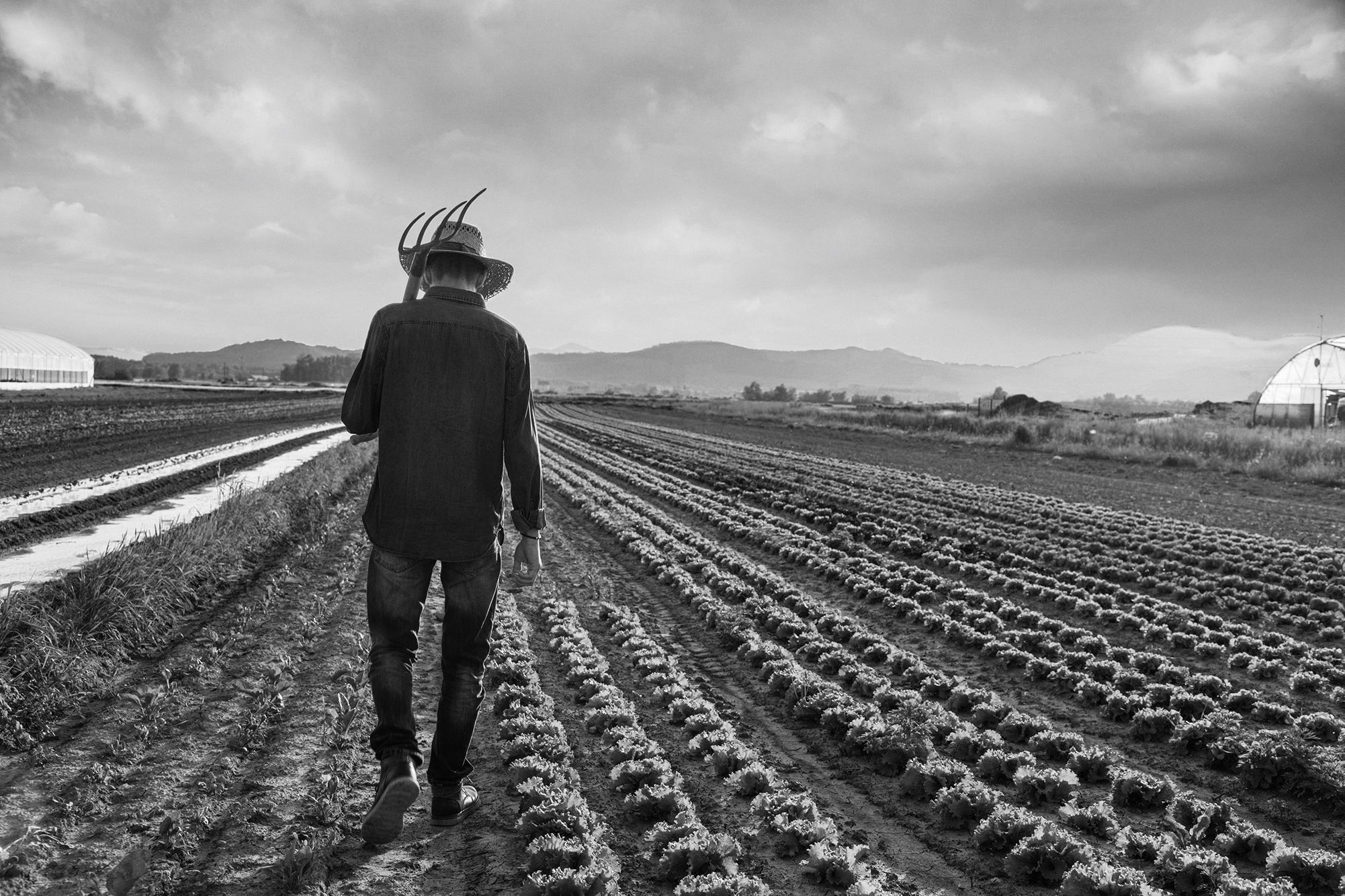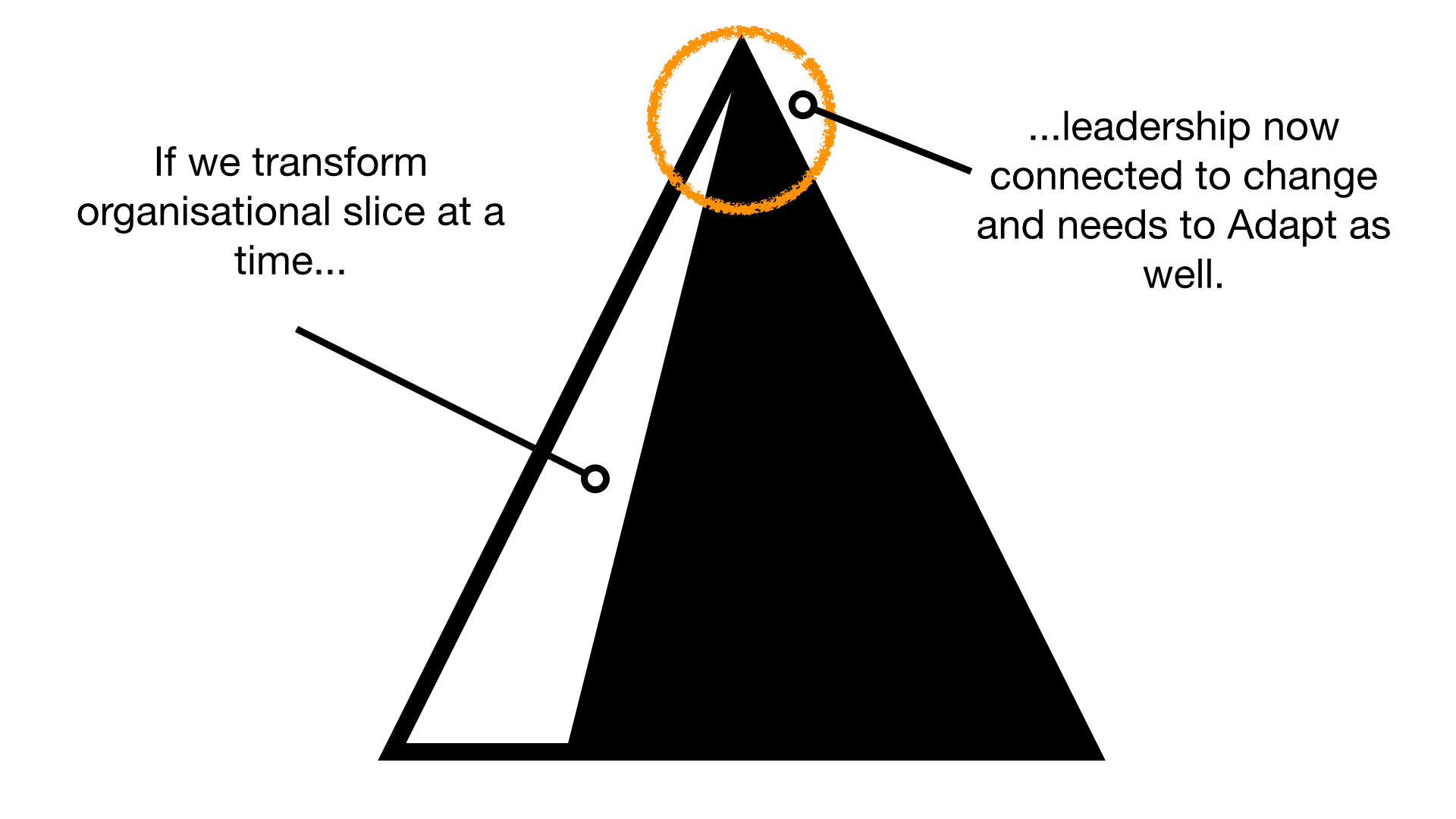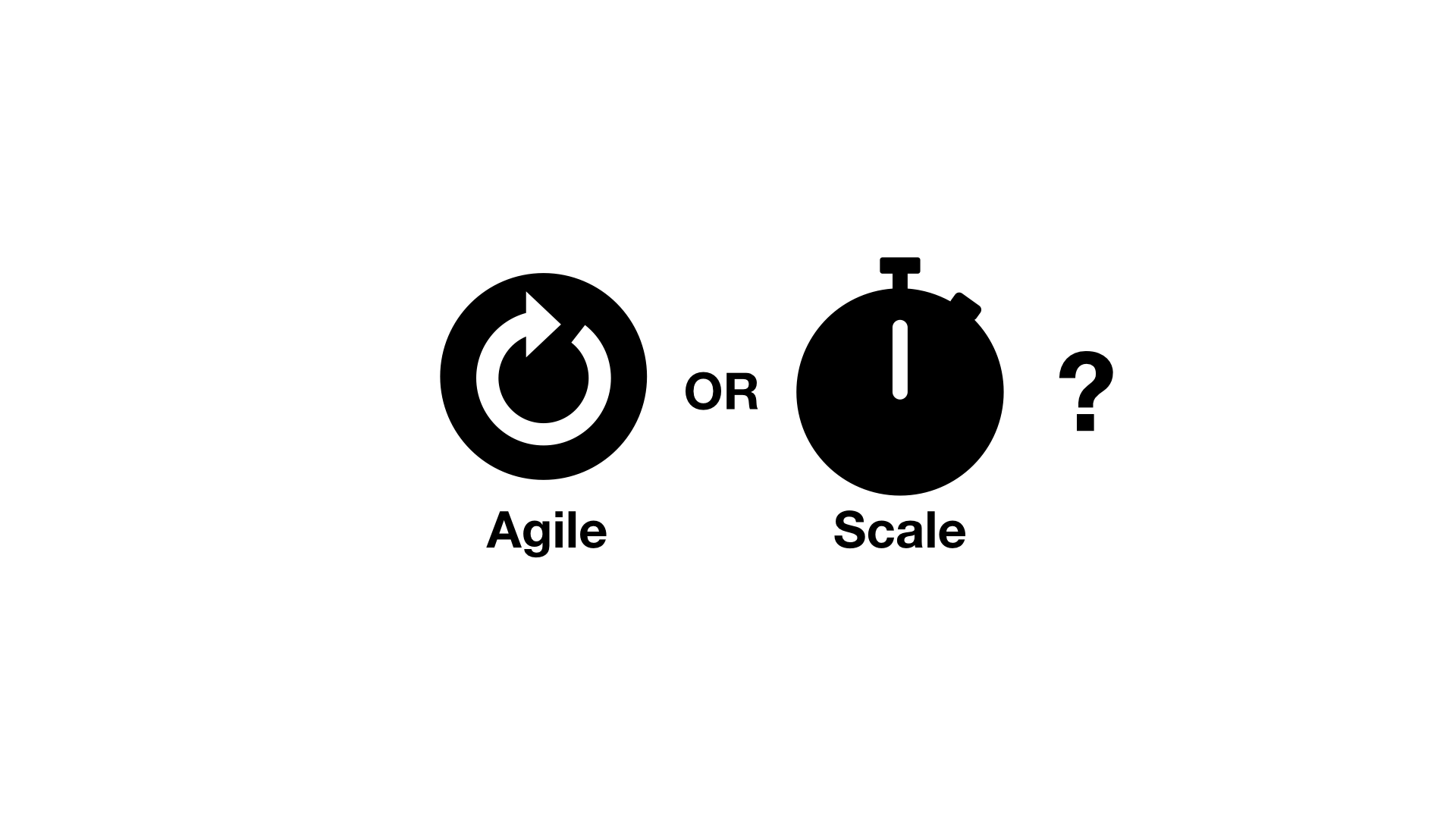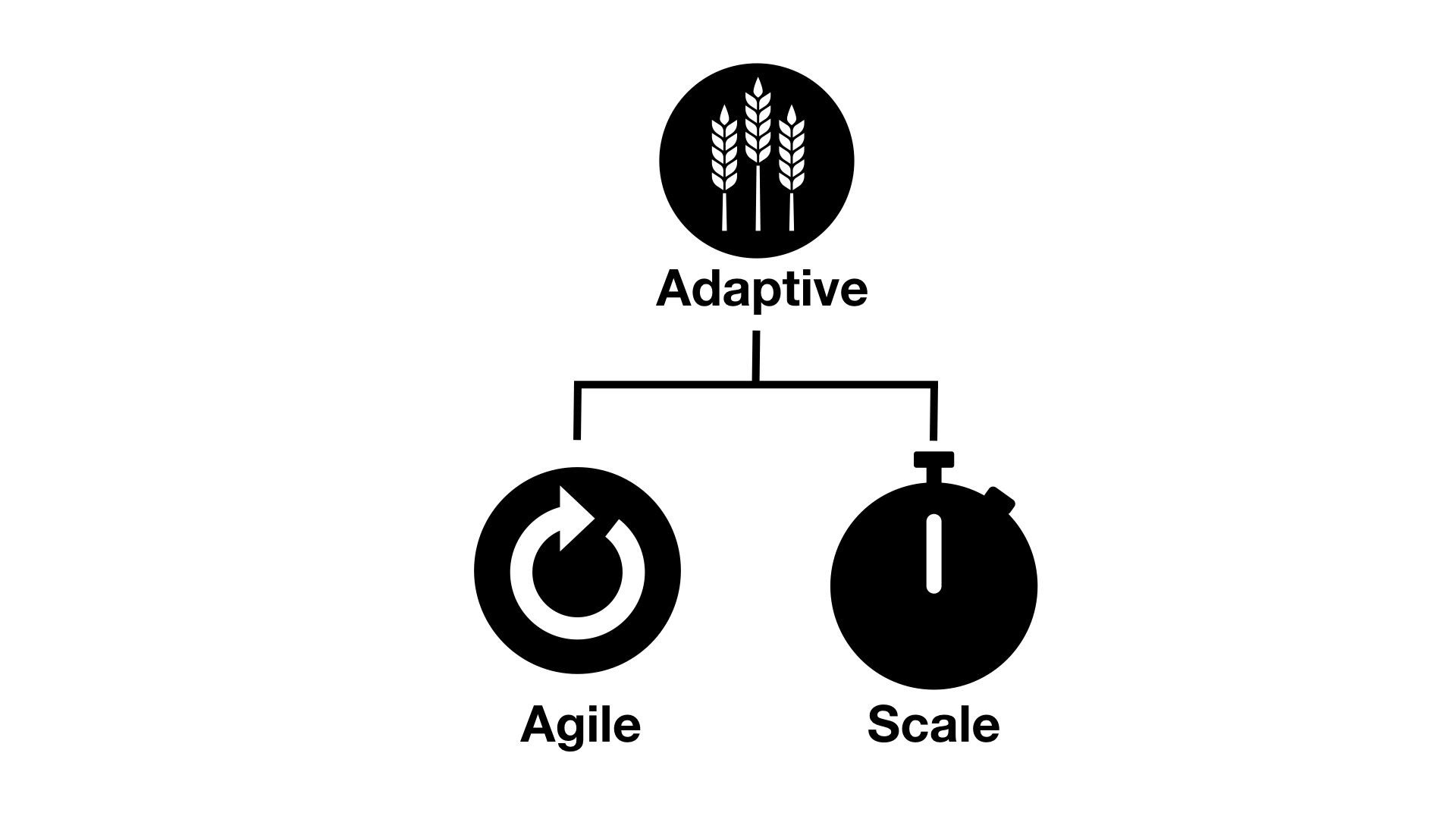
More and more is being written about flexible organisations, particularly now as we are all having to reconsider how we, and our organisations operate.
While I completely agree with these articles that leadership mindset is critical for these changes, many of them propose that leadership needs an Agile mindset. This is where, despite being involved in Agile right from the beginning, I start to have concerns.
 Figure 1 : Departmental Agile Transformation
Figure 1 : Departmental Agile Transformation
One approach to easing this is to transform using end-to-end organisational slices
 Figure 2 : Organisational Slice Agile Transformation
Figure 2 : Organisational Slice Agile Transformation
During the transformation leadership operates in a bi-modal form, having to switch between mindsets. If they revert to a fully ‘traditional’ mindset they risk killing the flexibility delivered by Agile, but if they switch to a fully Agile mindset they risk killing operations which actually benefit from a scale, mass, product mindset.
‘Agile organisation’ theory would appear to say that the whole organisation should move over to Agile, which would mean that only one mindset would be needed. The problem is that this would appear to remove the possibility of scale practices.
If you need both Agile and scale, which mindset should you have? Figure 3 : Agile or Scale
Figure 3 : Agile or Scale
My suggestion is both.
This isn’t an either/or argument; Agile and scale are techniques to deliver value to be deployed as need.
I like to view Adaptive leadership as farming, not just because I come from a farming background, but also because it takes us out of the the Agile versus scale debate.
Why farming? What viewpoint does this give us?
Farmers have to be practical people. They look to maximise the value they gain from their farms, but have to recognise their constraints:
While farmers are always looking for ways to diversify to mitigate risk, they recognise the constraints whether natural or man-made. Importantly these constraints can be viewed as a source of value ‘Other people can’t sell their cheese as Stilton because they don’t live in the necessary part of England’, not just negatives. In other words, they accept the constraints and focus on the best combination of products they can achieve.
Some of the possibilities would need large scale to exploit, wheat for instance, while others may be around differentiation, such as artisanal bread.
Another critical realisation that farmers have is that it can be good to lay land fallow, i.e. not producing, for long-term health. Not everything has to be operating at maximum output this season, to protect value production over the long term. There is value in protecting the long-term.
As markets, weather and argricultural technology change constantly, farmers know that what they produce may need to change season-to-season and year-to-year.
Some farmers can change what they produce more easily than others, but they are always looking for:
I would also argue that the restriction on this by large supermarkets actually puts the farmers themselves, and our supply chains, at greater risk. In their search for ever cheaper product in larger quantities, supermarkets dictate and lock-in farmers to long-term commitments. While making smaller returns for the longer term seems a low-risk strategy, if the markets shift, farmers can struggle to either make money from those agreements, or have the capital (or skills) to retool and switch product. The lack of flexibility adds risk.
Farmers generally have a different view of time from corporate executives, especially in the medium and long-term.
Many business people, and politicians, believe they either are in full control of their business, or believe they have to project that view. Farmers are under no such illusion. They cannot command the sun to shine, the crops to grow, or their livestock to produce healthy offspring.
By being realistic they can put risk mitigation in place through diversification, investment in new technology and data from authoritative sources such as weather services. If they believed they could control the world then none of these would be explored and the farm would be much more vulnerable.
As farmers realise there are many things they can’t control, they spend more time on what they can control - creating the best environment for their crops and livestock.
If you are a dairy farmer you invest in sheds, maintaining grass land, milking machines, maintaining the health of your herd. Arable farmers will maintain the soil, invest in machinery and storage facilities.
Farmers don’t produce anything valuable, plants and animals do. By creating the best environment they give those animals and plants the best chance of success and therefore the best outcomes.

Figure 4 : Adaptive includes both Agile and Scale
By stepping outside the Agile/scale debate, leaders can stop having to be an Agile or scale leader, and adopt an Adaptive mindset: